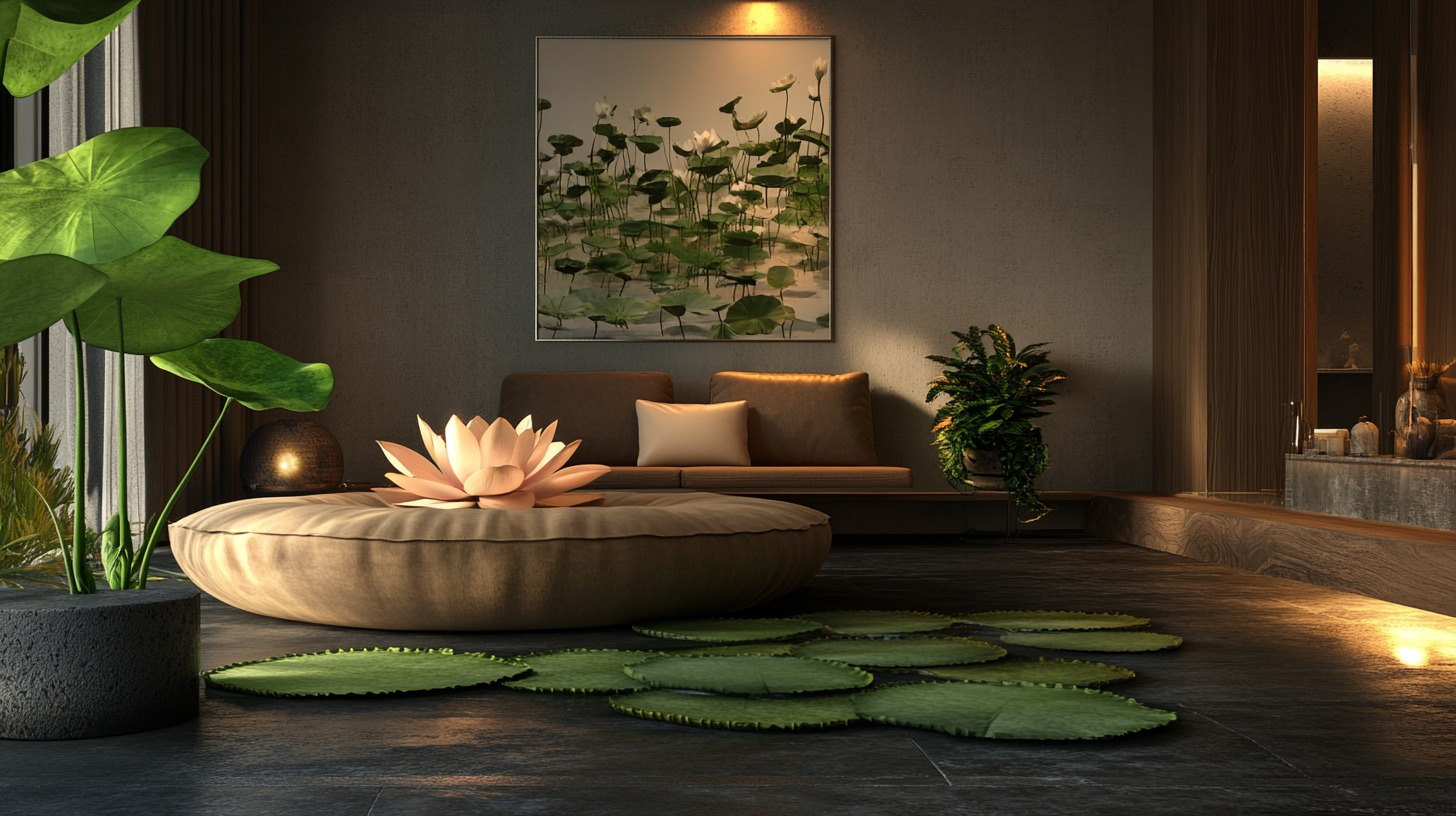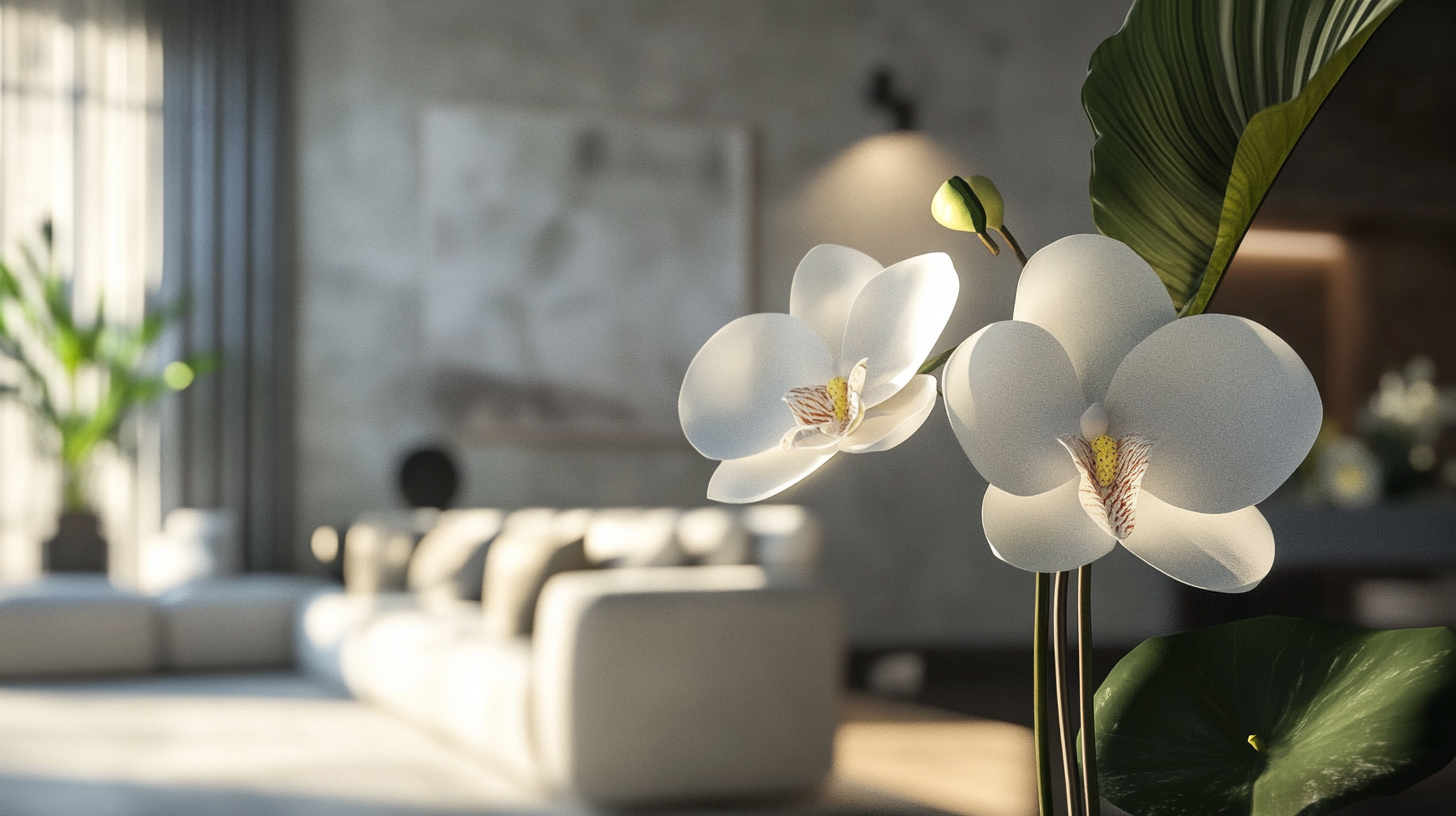
The world of interior design is continually evolving, embracing innovative concepts that seamlessly blend aesthetics with functionality. Among these concepts, one particularly captivating trend is the incorporation of artificial lotus flowers for decoration. These exquisite faux blooms not only mimic the natural beauty of their live counterparts but also provide lasting charm without the upkeep associated with real plants. The lotus flower, symbolizing purity and tranquility, has been celebrated across cultures for centuries, making it a perfect choice for modern interiors that strive to create peaceful and rejuvenating spaces. As designers explore new materials and techniques, the rise of artificial lotus flowers signifies a shift towards sustainability and versatility in home décor. This blog will delve into the journey of artificial lotus flowers in interior design, showcasing their transformative impact on spaces while highlighting creative ways to incorporate them into various styles.

Lotus flowers have long been revered across various cultures, symbolizing purity, enlightenment, and rebirth. In ancient Egyptian society, the lotus was not just a floral ornament but an emblem of creation and the cycle of life. The flower’s ability to bloom beautifully despite its roots in murky waters resonated deeply with philosophical and spiritual beliefs, making it a vital motif in their art and architecture. From hieroglyphs to intricate carvings, the lotus flower conveyed a profound connection to the divine, representing the sun's journey and the cyclical nature of existence.
As history evolved, the lotus transcended its geographical boundaries, finding its way into Asian cultures, particularly in Buddhism and Hinduism. In these traditions, the lotus symbolizes spiritual enlightenment and the flourishing of the human spirit. Lotus motifs became ubiquitous in temple architecture and textile designs, serving not only as decorative elements but also as spiritual reminders of the journey toward inner peace. This deep-seated historical significance of lotus flowers continues to influence modern interior design, where stylized representations are incorporated to create serene, tranquil spaces that reflect the beauty and sublime qualities of this remarkable flower.

In recent years, the world of interior design has witnessed a remarkable transformation with the incorporation of artificial lotus flowers. Innovative materials have revolutionized the way these elegant pieces are crafted, blending aesthetics with cutting-edge technology. According to a report by Allied Market Research, the global artificial flower market is expected to reach $2.67 billion by 2027, driven by advancements in materials that enhance realism and durability.
One of the key technologies propelling this evolution is the use of advanced polymers and silk blends. These materials not only mimic the intricate textures and colors of natural lotus flowers but also offer resilience against fading and wear. A study by Technavio highlighted that the application of UV-resistant coatings has increased the longevity of artificial plants, making them a preferred choice for designers seeking both beauty and practicality in their projects.
Furthermore, 3D printing technology has introduced unprecedented customization options, allowing designers to create unique designs tailored to specific interior themes. This shift is not just about replicating the natural beauty of lotus flowers; it's about redefining how these elements can be integrated into a space, enhancing overall design without the environmental concerns associated with real plants. As technology continues to evolve, we can expect even more innovative developments in the world of artificial flora, enabling a seamless integration of nature-inspired decor in modern interiors.
| Dimension | Traditional Materials | Modern Materials | Technological Innovations |
|---|---|---|---|
| Realism | Silk and Fabric | Polyester and Latex | 3D Printing Technology |
| Durability | Short Lifespan | UV Resistant | Smart Materials |
| Maintenance | Requires Regular Cleaning | Easy to Clean | Self-Cleaning Coatings |
| Customization | Limited Colors and Styles | Vast Range of Options | Custom 3D Designs |
| Environmental Impact | Natural Resources Used | Recyclable Materials | Sustainable Printing Processes |
The demand for artificial floral decor, particularly artificial lotus flowers, has seen a significant rise in modern interior design. According to a recent report by the Global Industry Analysts, the global market for artificial flowers and plants is projected to reach approximately $2.6 billion by 2027, growing at a compound annual growth rate (CAGR) of 4.2% from 2020. This shift indicates a growing consumer preference for maintenance-free decor options that still bring a sense of elegance and tranquility to living spaces.
Artificial lotus flowers, known for their aesthetic appeal and symbolism of purity, are increasingly being integrated into contemporary interiors. A survey conducted by Home & Garden Magazine found that 67% of homeowners are opting for artificial alternatives in their decorative choices, citing ease of care and longevity as key benefits. Designers are leveraging this trend by incorporating these lifelike blooms into various styles, from minimalist to eclectic, enhancing the ambiance without the upkeep associated with real plants.
Additionally, social media platforms have played a pivotal role in popularizing artificial floral decor, with hashtags like #ArtificialFlowers and #InteriorDesign garnering millions of posts. This trend is further supported by data from Pinterest, which reported a 150% increase in searches for “artificial flower arrangements” in recent years. As a refined solution for modern interiors, artificial lotus flowers are positioned to thrive in this evolving market, catering to a diverse clientele seeking beauty without the hassle.
In contemporary interior design, the push towards sustainability has led to a remarkable evolution in the use of artificial flowers, particularly eco-friendly varieties. Unlike traditional floral arrangements that often involve significant environmental impact due to farming practices and transportation, artificial flowers made from sustainable materials significantly reduce this footprint. According to industry reports, the global artificial flowers market is projected to grow at a robust rate, driven by increasing consumer demand for sustainable and maintenance-free decor options.
The integration of eco-friendly artificial flowers into interior spaces aligns seamlessly with other sustainable design trends, such as the use of recycled and natural materials in furnishings and flooring. For instance, options like cork and FSC-certified wood flooring not only enhance aesthetic appeal but also embody environmental consciousness. Experts note that these design innovations reflect a broader movement towards creating spaces that are not only stylish but also sustainable. With the rise of artificial green walls and eco-conscious decorative items, interior designers are reimagining how spaces can promote both beauty and ecological responsibility, ensuring a greener future for design.
This pie chart represents the percentage of different materials used in eco-friendly artificial flowers for interior design, highlighting the sustainability aspects of modern decoration choices.
The aesthetic appeal of artificial lotus flowers has garnered significant attention in modern interior design, serving as a captivating element that enhances various spaces. Their intricate design and vibrant colors mirror the beauty of their natural counterparts, providing a sense of tranquility and refinement. As more designers and homeowners recognize the versatility of these artificial arrangements, they become a sought-after choice for adding elegance to both residential and commercial environments.
Incorporating artificial lotus flowers into interior spaces can transform an atmosphere, creating focal points that draw the eye and evoke a sense of calm. Their strategic placement within a room, whether as a centerpiece on a dining table or as part of a minimalist shelf display, allows for effortless integration into diverse design styles. Additionally, the low maintenance aspect of artificial lotus arrangements ensures that the beauty lasts without the need for regular care, making them an ideal option for those seeking sustainability and simplicity in their decor.
Moreover, artificial lotus flowers can be creatively paired with other design elements such as lighting and textures to further enhance their visual impact. For instance, combining them with soft ambient lighting can create a serene environment, perfect for relaxation. By embracing these arrangements, modern interior design not only celebrates beauty but also paves the way for innovative approaches to creating cohesive and inviting spaces.

